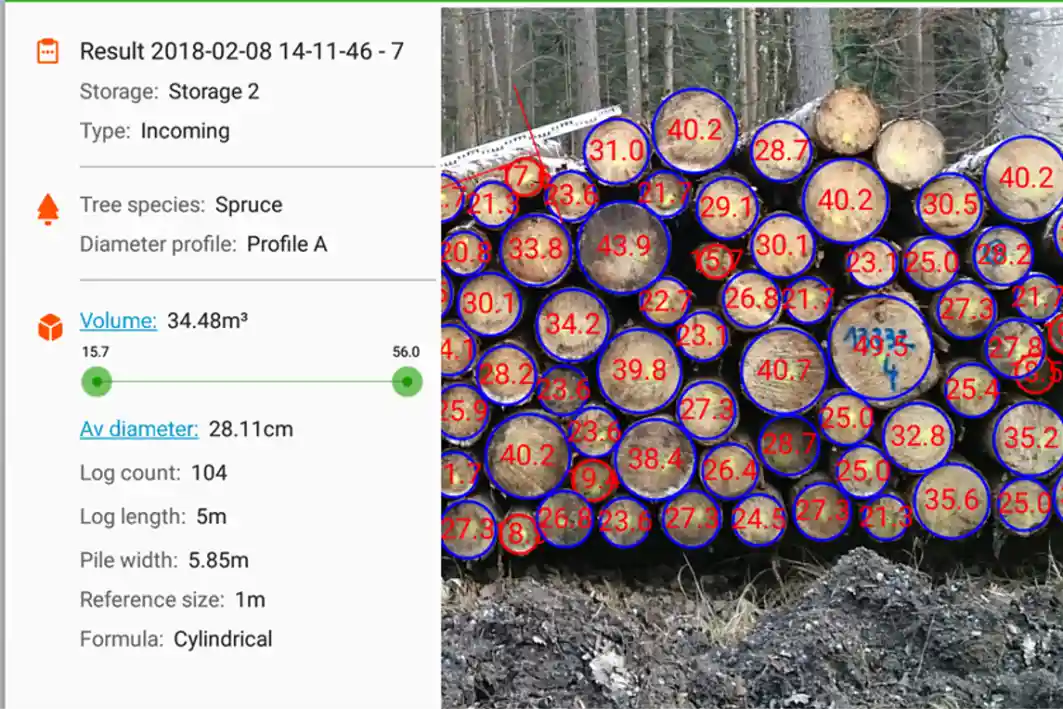As you probably might know already, one of the main Timbeter’s functionalities is to detect and measure log diameters. As always, there’s much more and our team is always ready to write about the additional possibilities when using Timbeter’s diameter detection.
When using Timbeter’s diameter detection, you instantly get the following data:
· Number of logs in a pile;
· The average log diameter of the pile;
· Diameter measurement of each log;
· Calculation of the volume according to the formula selected;
· Diameter distribution (tally sheet);
· Range of diameters (you can easily set exact range, for example, from 15-30 cm, and see how many logs and which logs exactly are in this range);
Getting started with diameter profiles
But there’s also the possibility to set diameter profiles, meaning that different diameter groups are marked with different colors.
With this functionality, users have the possibility to set different groups of diameters (small, medium, large) and when the measurement is made, they will see the different diameter groups with different colours.
For example:
Diameters up to 21 cm are marked with a certain color inside the pile;
Diameters 22-28 cm are marked with a different color inside the same pile;
Diameters 29+ cm are also marked on a third color inside the pile.
With this type of classification, it makes it easier and more visual for the user to understand the composition of a certain pile of logs, determined by diameters on different ranges and colors. By using this feature, the digital detection allows the user to visualize the logs suitable for the supply chain, quality control, pulp or fuel wood, etc.
From the storage side, users will always see how many logs and the percentage of the diameter group is taken/stored from the total volume.
Besides, there’s also a possibility to add the price to each diameter profiles so in the storage there’s a clear overview of the total loads/piles value.
Setting the accepted range of diameters
With Timbeter, it’s also possible to automatically mark all the diameters that are out of an acceptable diameter range, which will appear as “cull” in the application. For example, if a user sets the accepted range from 5 to 45 cm, then all logs that are out of this range will be marked as defect. This feature helps measurers to avoid transporting or adding certain logs that are too small or too big for the next steps of the production chain. Since Timbeter detects logs mainly used for sawmills, pulpwood and fuelwood, this feature easily solves issues regarding the sorting of logs that are out of range, giving them a better use and determining the real usable volume inside the factories.
Are you also measuring logs with Timbeter’s Diameter functionalities? Tell us about your experience on info@timbeter.com
